MP SPEAKS | A common perception among political observers and analysts is that contests involving Barisan Nasional, Pakatan Harapan and PAS will likely result in a victory for the ruling coalition. The Sungai Besar and Kuala Kangsar by-elections were won by BN with increased majorities, and are often used as evidence that three-cornered fights will be in their favour.
I do not dispute that straight fights against BN would be the ideal situation for the opposition. But I want to use the following three points to show that Harapan can still win Selangor, even in the presence of three-cornered fights involving PAS.
The political landscape has changed since the Sungai Besar and Kuala Kangsar by-elections. The political stakes for voters in by-elections are not very high. Voters know that they are not deciding the future of a state or federal government. Local issues become more important than state and national issues. Voter turnout is also significantly lower than in general elections. The fact that BN would perform better in these by-elections is thus not that surprising.
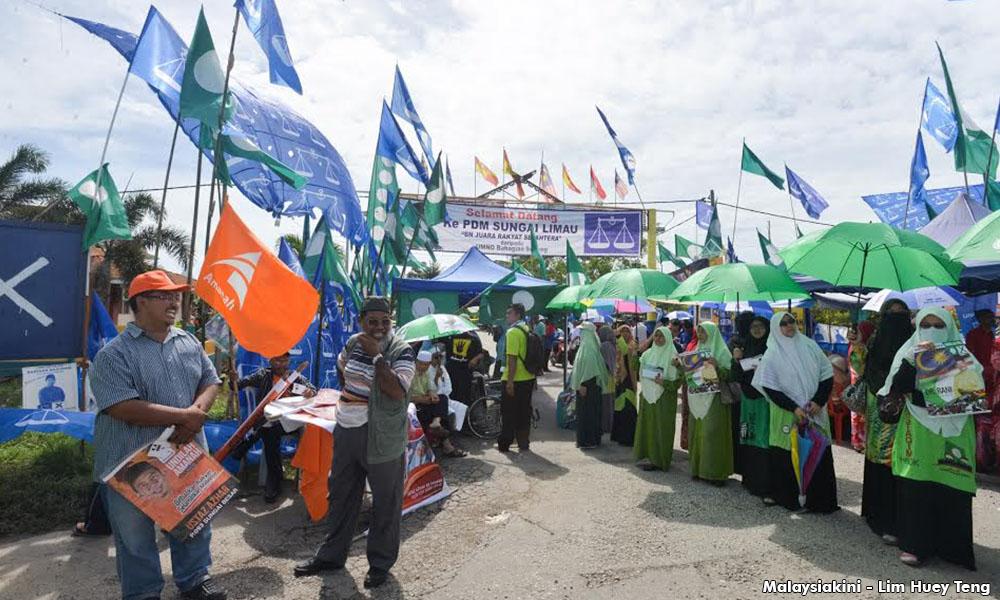
The political landscape has changed significantly since the two by-elections in June 2016. Back then, Parti Pribumi Bersatu Malaysia (Bersatu) had not been formed. Dr Mahathir Mohamad and Muhyiddin Yassin had not been sacked by Umno. PAS had not yet broken off ties with PKR. Bersatu had not yet joined Harapan. The Harapan leadership line-up had not been established.
More than a year after the two by-elections, it is increasingly clear to voters that there are now two distinct and broad-based coalitions that can form the next federal government and the state government in Selangor. PAS does not feature in either coalition.
In the context of a general election where voters have to choose who forms state and federal governments, it would be a mistake to assume that all those who supported PAS in past elections would continue to support PAS in the next general election.

The more we make the next election a stark choice between supporting a BN government led by a world-renowned kleptocrat, and a historic opportunity to change to an alternative coalition with a proven track record of governing two states for two terms, the likelier it is that more voters will not want to "waste" their vote on a third party candidate, i.e. PAS, which has no chance of forming the government at either the state or federal level.
In general elections prior to 1990, in seats featuring two or more opposition parties, voters never had to face the choice between an opposition coalition that could form the next state or federal government. In a contest featuring BN, DAP and PAS, pro-opposition voters did not have to think about whether DAP or PAS would form the next state or federal government.
In GE14, this choice is now available to pro-opposition voters, given that there is a real chance that Harapan could win Putrajaya and very likely retain control of the Selangor state government. As such, past assumptions about how voters would vote in a multi-cornered fight must be revised.
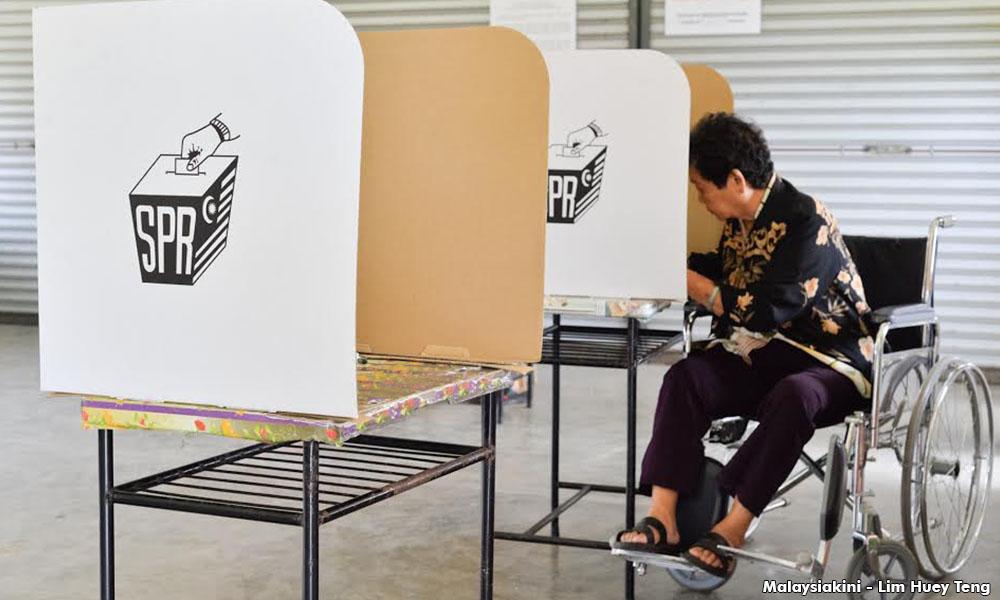
PAS’ political success in Selangor is also relatively recent. One of the reasons political observers tend to overestimate PAS’ overall support in Selangor is because of the 15 state and four parliamentary seats won by PAS in GE13. But they forget that PAS’ electoral success in Selangor is a relatively recent phenomenon.
According to Table 1 below, PAS did not win a single parliamentary seat in Selangor from 1990 to 2004. Even in the 1999 Reformasi elections, where PAS emerged as the largest opposition party in Parliament, won control of Terengganu and retained Kelantan, it only managed to win four state seats in Selangor – Sungai Besar, Sungai Burung, Gombak Setia and Kajang.

Even in the 2008 and 2013 general elections, PAS only managed to win 52.9 and 54.3 percent of the popular vote, respectively, in the parliamentary seats it contested, and 49.5 and 54.9 percent of the popular vote respectively in the state seats it contested. And, as we shall see in the next point, a large proportion of this support was from non-Malay voters, who are likely to abandon PAS in droves in GE14.
Of course, PAS can respond by saying that DAP and PKR’s electoral successes in Selangor are also a relatively recent phenomenon. And they would be right. The difference is that DAP and PKR are part of a larger political coalition, Harapan, which has a legitimate chance of forming the next federal government, and are in a strong position to retain the Selangor government.

On the other hand, for the first time since 1986, PAS is in a politically isolated position (putting aside the stillborn Gagasan Sejahtera coalition), with no chance of forming either the state or federal government on its own.
Additionally, PAS did not win the majority of Malay votes in Selangor in GE13. Perhaps the best evidence of PAS’ strength in Selangor can be seen in its performance in that election, where it won a historic 15 out of the 20 state seats it contested. Table 3 below shows the estimated level of support for PAS by Malay, Chinese and Indian voters in the 15 state seats it won in GE13 in 2013.
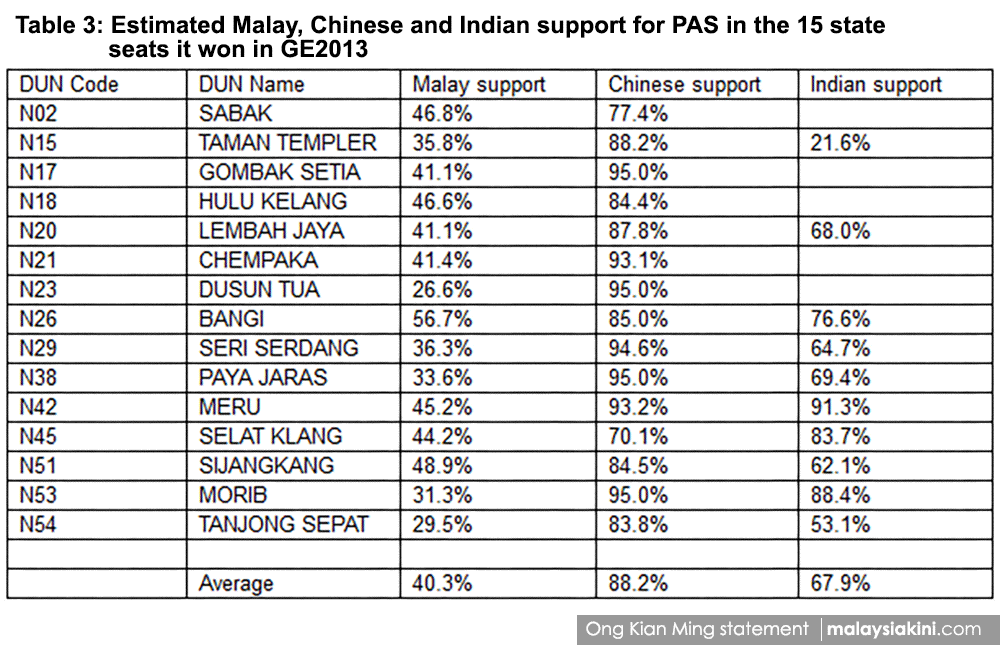
From the table above, what is clear is that PAS failed to win more than 50 percent of Malay votes in all but one (Bangi) of the state seats it contested. The average Malay support for PAS in the seats it won was approximately 40 percent. PAS managed to win 14 out of 15 state seats in Selangor in GE13 because of the high non-Malay support it received – an estimated 88 percent of Chinese and 68 percent of Indian support in these seats.
I would make the argument that Malay support for PAS in newly-won seats in GE13, such as Seri Serdang, Paya Jaras and Morib, was largely due to the fact that it was part of a larger opposition coalition, rather than because of its grassroots strength and support. Once PAS is no longer part of an opposition coalition, not only would its non-Malay support drop precipitously, I would argue that in many areas, its support among the Malay community would also fall.
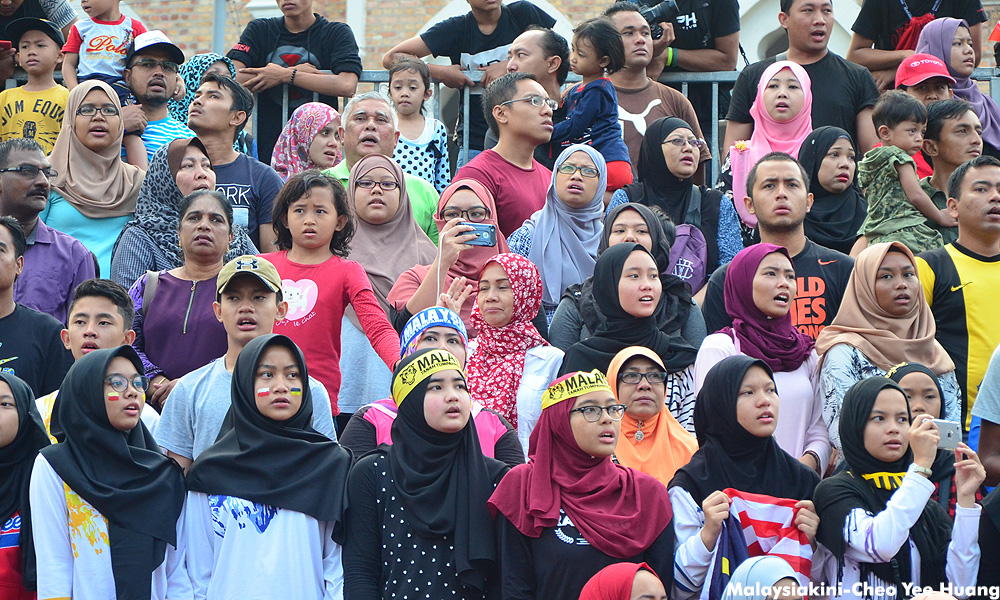
There is a phenomenon that has been documented in political science called Duverger’s law. It states that in first-past-the-post single member constituency electoral systems – used in countries like Malaysia, the United Kingdom and the United States – voters tend to focus their votes on two parties (or two coalitions, in the case of Malaysia). In other words, most voters tend not to want to ‘waste’ their votes on third party candidates, because they know that these candidates have little chance of winning the seat. This does not mean that third-party candidates will get no votes, but that they will get relatively few.
Harapan can expedite the move towards a two-coalition competition in Selangor by taking the following steps. Firstly, it can and should make it clear to voters that PAS will not be part of the Selangor state government after GE14, regardless of the outcome. This will provide a further incentive for pro-opposition voters to choose Harapan over PAS, especially if they do not want BN to recapture the Selangor state government.
Secondly, it must actively court fence sitters and PAS sympathisers to continue to vote for a Harapan government in Selangor in GE14. As I argued yesterday, in Part 1 of this series, many voters in Selangor do not have very strong party loyalties. Many of the voters who voted for PAS in GE13, especially Malay voters, can be persuaded to switch their votes to another party in Harapan, on the basis that it can form the next government in Selangor and in Putrajaya.
Thirdly, Harapan must focus its attention on comparing and contrasting itself with the BN, and not go all out to attack PAS. The main political adversary for Harapan in Selangor and in other states is still BN. If Harapan is too obsessed with attacking PAS, this will inevitably alienate many PAS sympathisers.
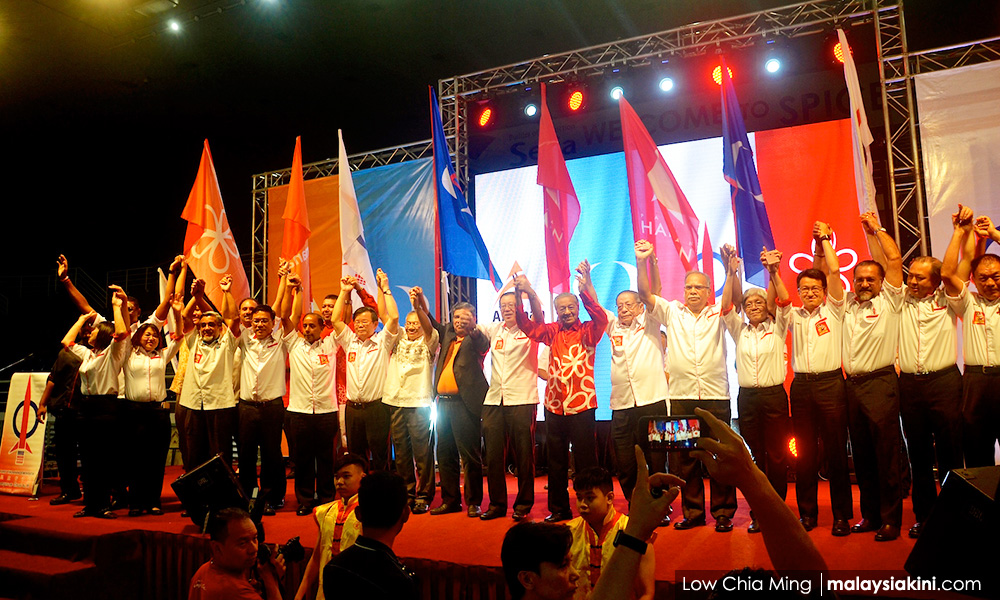
At the end of the day, given Azmin Ali’s popularity as the current menteri besar of Selangor, especially among the Malay community, there is no reason why he cannot lead Harapan in Selangor to a convincing victory in GE14, even if the coalition has to go up against BN and PAS in some seats – including his own parliamentary seat of Gombak and his state seat of Bukit Antarabangsa.
Tomorrow, in Part 3 of this series, I will show the possible electoral outcomes for GE14 under different assumptions of how many votes PAS can obtain in the context of three-cornered fights. By showing these results, I hope that I can convince some of the sceptics that despite having three-cornered fights, Harapan can still regain control of the Selangor state government.
Part 1: The battle for Selangor in GE14
Part 3: S’gor numbers look up for Harapan, PAS’ look bleak
ONG KIAN MING is Serdang MP and head of the Penang Institute in Kuala Lumpur.
The views expressed here are those of the author/contributor and do not necessarily represent the views of Malaysiakini.

